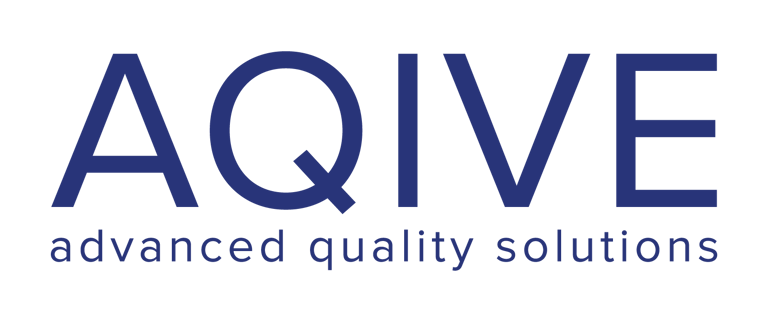CAPA - An Unexploited Treasury for Innovation
Unlock the hidden potential of CAPA data and turn compliance into a powerhouse of innovation.
Muhamed Sabanovic
8/30/20243 min read


In today’s competitive business environment, Corrective and Preventive Actions (CAPA) are often seen merely as tools to maintain compliance, and quality standards. However, CAPA data, when combined with other business insights, can reveal hidden potential far beyond those traditional uses. By harnessing CAPA records through data analytics and artificial intelligence, companies can unlock a treasure trove of opportunities for innovation, strategic growth and increased customer satisfaction.
The Hidden Value of CAPA Data
CAPA data addresses quality issues, identifies root causes, and documents corrective actions. However, due to perceived costs and potential scrutiny, CAPA processes are often stigmatized, leading to avoided transparent analysis and reporting. While seen as routine and unremarkable steps in quality control, these records contain valuable insights into failures and deviations. Properly leveraged, CAPA data offers deep insights into operational flaws, unlocking opportunities for optimization and innovation beyond compliance.
Integrating CAPA with Other Data Sources
Imagine a scenario where CAPA data doesn’t stand alone but is combined with other datasets from across the business—production logs, customer feedback, sales data, supply chain metrics, product operation status, callbacks, and similar data sources. This integration can transform CAPA records into a powerful asset for deeper analysis and preventive failure detection or maintenance. Using advanced data analytics and AI techniques, businesses can uncover patterns that are invisible when looking at data in isolation. These combined datasets enable organizations to understand the intricate interdependencies within their operations, leading to more accurate predictions and better decision-making.
Recognizing Patterns and Root Causes
Artificial intelligence and machine learning algorithms excel at recognizing patterns and anomalies within complex datasets. By applying these technologies to integrated CAPA data, companies can go beyond the surface level of problem-solving. AI can help identify recurring issues and link them to specific variables, providing a more nuanced understanding of root causes. This deeper insight enables companies to address problems more effectively, implement preventive measures with greater precision, reduce the frequency of CAPA occurrences, and ultimately reduce the total cost of quality.
Leveraging Insights for Innovation
The real magic happens when these insights are used as a springboard for innovation. CAPA data, enriched through AI analysis, can reveal gaps, inefficiencies, and potential opportunities that would otherwise go unnoticed. For example, a recurring quality issue might inspire a redesign of a product or process, leading to improved performance or cost savings. Similarly, insights from CAPA data could inspire developers to design completely new products or services, directly contributing to the company’s innovation pipeline.
Conclusion
CAPA is much more than a compliance necessity—it’s an underutilized resource for driving innovation. By integrating CAPA data with other business information and applying advanced data analytics with AI, companies can better exploit internal information and enrich their business. The next time you look at a CAPA record, consider it not just as a log of corrective actions but as a potential catalyst for strategic insights and groundbreaking ideas. Embrace CAPA as a treasury of untapped potential, and let it guide your journey toward a more innovative future.
#CAPA #QualityManagement #DataAnalytics #Innovation #AI #Compliance #BusinessGrowth #RootCauseAnalysis #PreventiveActions #OperationalExcellence #StrategicInsights #BusinessIntelligence #ContinuousImprovement
Info Box - CAPA and Compliance
Here’s an overview of key laws, codes, regulations, and standards that either require or propose Corrective and Preventive Actions (CAPA). These are relevant across various industries, especially in regulated sectors like healthcare, pharmaceuticals, and manufacturing.
FDA Regulations (U.S.)
21 CFR Part 820 (Quality System Regulation - QSR)
21 CFR Part 210/211 (Current Good Manufacturing Practice - CGMP)
21 CFR Part 600 (Biologics)
International Standards
ISO 9001:2015 (Quality Management Systems)
ISO 13485:2016 (Medical Devices - Quality Management Systems)
ISO 14001:2015 (Environmental Management Systems)
ISO/TS 16949 (Automotive Quality Management System)
IEC 61508 (Functional Safety)
IEC 61511 (Safety Instrumented Systems)
IATF 16949 (Automotive Quality Management System)
GxP Guidelines
Good Manufacturing Practice (GMP)
Good Clinical Practice (GCP)
Good Laboratory Practice (GLP)
EU Regulations
EU Medical Device Regulation (MDR) 2017/745
EU In-vitro Diagnostic Regulation (IVDR) 2017/746
Medical Device Directive (MDD) 93/42/EEC
Medical Device Single Audit Program (MDSAP)
Pharmaceutical and Biotech Regulations
ICH Q7 (Good Manufacturing Practice for Active Pharmaceutical Ingredients)
ICH Q10 (Pharmaceutical Quality System)
Other
NIST Special Publication 800-53
AS9100 (Aerospace Quality Management System)
HACCP (Hazard Analysis and Critical Control Points)
FDA FSMA (Food Safety Modernization Act)
